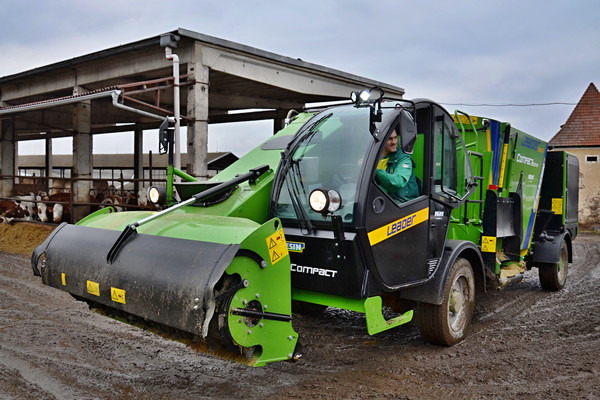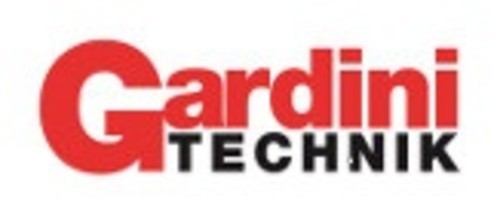
"Tailor made" rations with modern cutter-mixer wagon
Not just cutting and mixing different ingredients, but also operational and energy efficiency, operator comfort, and both faster and safer road travel. This is what modern mechanized systems for preparing and managing livestock feed offer. Among the most advanced systems, there are those for real-time monitoring of the nutritional content of the ration
The cutter-mixer wagon has undergone remarkable evolution over the last few years, broadening its scope of action both metaphorically and in the real sense. In fact, adopting corn silage (and other plant matrices farmed for this purpose) for feeding anaerobic digesters to produce biogas, has led to an increase in the use of cutter-mixer wagons; at the same time, their use by contractors has imposed the adoption of a number of modern functions on the “vehicle” part of the machine.
Types
In parallel, there has been an increase in the types available on the market, able to meet the most specific requirements. Initially equipped with one or more horizontal augers, the cutter-mixer wagon evolved quite quickly towards one or more vertical augers, a constructive solution that provides certain advantages over the first. Today, industry makers offer both solutions, as it is possible to find advantages (and disadvantages) in both cases. Relatively new is the appearance of trailed cutter-mixer wagons driven by an independent electric or diesel engine (for fast long distance travels) or the opposite, installed at fixed point (for example, in stables with robotized feeding systems), or even three-wheeled with reduced cubic capacity tank models for stables characterized by tight manoeuvering spaces. In addition, several manufacturers have made the machine more versatile by equipping it with a spear turbine to redo the litter.
The vehicle
The need for quick transfers, greater comfort, and handling of the mixer wagon, coupled with the demand for even higher working capacity (ie with a larger capacity of the mixing tank), led to a major change in the vehicular characteristics of the machine.
The maximum speed has reached 40 km/h, and the more advanced models have been equipped with suspension systems on an axle, or even on both. Obviously, the full hydrostatic traction on self-propelled models, and dedicated hydraulic or pneumatic systems on the trailed ones, ensure ready and effective braking, even with the fully loaded machine.
Much attention has been given to fuel saving, both in the preparation phase of the blend and in case of fast transfers. On the self-propelled models, the Faresin Industries in Breganze (VI) offers the Ecomode version, which allows an electronic control unit to vary the cylinder capacity of the two hydraulic motors in order to reach 40 km/h with the diesel engine only at 1800 rpm. In addition, to ensure maximum safety in the process of transferring, Ecomode includes standard ABS, traction control (ASR), and hill start (HH), as well as the front axle slipping prevention system.
Still, on energy-saving issues, Faresin introduced on trailed mixer wagons a two-speed mechanical gearbox to ensure the ideal mixing of all types of products, thus reducing the power demand to the tractor’s pdp.
In order to significantly improve handling and manoeuvrability, even in the event of remarkable obstacles, several wheel steering options have been introduced both in the self-propelled wagons and in the mixer wagons. Either on one axle or both, as well as the so-called “crab “(or “dog step”), for which all wheels are turned in the same direction, so the machine advances obliquely.
Mission: Better Efficiency and Sustainability
These two goals are achieved simultaneously with fuel economy savings. Many cutter-mixer wagons cannot, by their very nature, offer the best performance in this regard, since virtually all drives (including the machine propulsion) are hydraulically powered, a type of power transmission which has, at the same time, well-known advantages over the mechanical one, but it is inevitably characterized by lower performance. Over the last few years, however, the issue has been changing. Breganze’s Faresin Industries (VI) has introduced on its models CVMIX (Continuously Variable MIXing), a motion transmission based on the continuously variable principle, in this case applied to the mixing function, guaranteeing both a lower diesel consumption by reducing the power requirement, and also cutting the running time of this routine phase as it is more operator user-friendly, as he is no longer forced to select the best gear or engine speed to perform the different load sequences.
Along with the aim of increasing the overall mixing efficiency, Faresin has introduced, on some of its trailed models, the possibility to run some cycle phases with an electrical power source. The principle assumes that during the loading and mixing of the ingredients of the ration the wagon is stationary, connected to the tractor which drives it through the power take-off unit. This is the most time-consuming stage, therefore it significantly affects the fuel consumption. On its trailed models, Faresin provides for an electric engine to be activated in such cases, so that the coupled tractor is only used for unloading and movement. In addition to reducing costs by saving diesel (up to 30% according to Faresin, depending on the electricity and fuel costs), a significant reduction in CO2 and other combustion products is also achieved.
The driver’s seat
Until recently, on self-propelled versions - except for rare exceptions - the driver’s seat was made up of a rather “spartan” cab, with narrow spaces, sometimes with handcrafted controls and basic dashboards. Even the level of comfort left much to be desired. This is no longer the case, and especially on the leading models of leading market makers, it is the policy to provide cabs equipped in such a way they can compete with the most advanced tractors. Commands that manage electronic functions, guarantee the reliability and manageability; increased visibility around the machine (in several cases also with the availability of a retro-camera); a control console fit for the suspension and cushioned seat; heating, ventilation and even sophisticated and efficient air conditioning systems, complete digital instrumentation. These are the main peculiarities that allow the farmer to spend many hours working on the (cutter) mixer wagon with high levels of safety and well-being.
Real-time analysis of the ration
One of the main principles of the so-called “precision animal husbandry” is the precision feeding, to ensure maximum control over the quality of the ration so as to be as close as possible to the nutritional requirements of the animals. In accordance with this principle, specific diets have been developed for a long time, for a number of groups of animals of the herd, on the basis of the productive targets. The evolution now concerns the “real-time” control of the nutritional quality of the ingredients, so as to promptly correct any deficiencies that may arise. The Faresin Industries’ Precision Feed Measurement (PFM), includes the use of polySPECNIR, a spectrophotometer based on the (NIR, Near Infrared) matrix reflection analysis, which can be utilized at every stage of the process even directly on board of the mixer wagon) as it is able to control the entire food supply chain of the bovine, to keep homogeneous the ration from the nutritional point of view.
In detail, the instrument can perform chemical-physical and nutritional analysis of different matrices, in real-time and directly “on the field”, providing moisture values, crude protein, lipids, fibre, dry matter, ashes and many other characteristics of the various ingredients and of the whole mix in the various stages of the preparation routine.
PolySPECNIR can also be used by itself, starting with the determination of the most appropriate time for harvesting the base products of the ration. If installed, for example, on a forage harvester equipped with a georeferencing system, the instrument can produce maps of the silage corn protein value, with useful information for both the definition of later agronomic plans and, above all, for the nutritional balance of the silage. Obviously, the instrument is also suitable for analysing individual ingredients, whether flours or different kinds of insulates. Optical sensors and a specific cooling system make reliable measurements even for dishomogeneous and moving materials. The software uses a number of predefined calibration curves of the different matrices, but it is also possible to introduce data for specific products. Output data can then be transferred wirelessly to a tablet or a computer.
The instrument is also offered in several other versions: the polySPECNIR Biogas not only does provide information on the properties of digestor diet components and calculates meta-gene potential in real time, but it also can, through special calibration curves, carry out product analysis during the anaerobic fermentation. There is also polySPECNIR Seeds, with which we can analyze the characteristics of cereal grains and oleoprotein gels.








